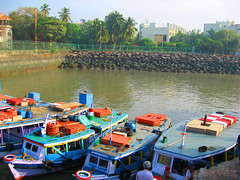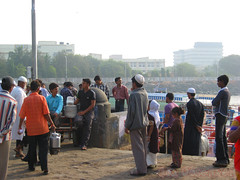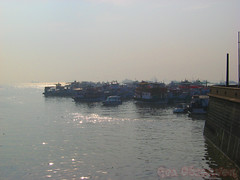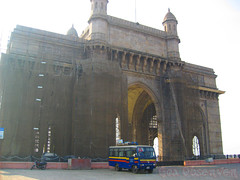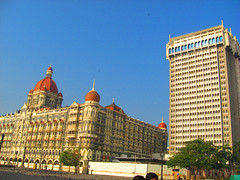
There was a time when Goa was enormous, spanning vast almost infinite boundaries from pristine beaches to craggy hillocks. It’s the place where you grew up, where you didn’t think twice about visiting a neighbor or chatting up a stranger. The markets, streets and beaches were your territory, which was occasionally invaded by a drifting tourist. It was where no one worried if their loved one had not yet returned home after dark and where the news of a burglary was as rare as a shooting star in the night sky. The verdant greenery from the evergreen forests to the vast fields was a sight to behold. All the people and all the houses that surrounded you were as familiar as the things in your own room. The lazy pace of life reassured you that the more the things changed; the more they remained the same.
The Goa we have today is not the Goa of yore. The stories of our sobit, sundor ani bhangrachem Goem have reached all parts of our country and abroad and consequently we have migrants coming in to have a share of the spoils. When looking at the whole picture, the huge migrant influx seems destined to be the end of the Goa we have grown and known for so many years. Today’s Goa is rife with problems like ecological destruction through mining, real estate ‘development’ at the cost of our village homes, untreated garbage, rising crime graph, social unrest and a lethargic government consisting of selfish individuals concerned with amassing private fortunes at the cost of the people. Despite native Goans having a relatively low birth rates, Goa's population as tripled since liberation four decades ago precisely because of immigration.
Is it so easy to ignore the news of burglaries almost every other day? Are we ready to acknowledge that the streets and beaches are no longer safe? Are we so accustomed to the stench of rancid garbage that we only care enough to hold our noses and frown in disgust as we mutter a curse under our breaths? Are we ready to give away our hard earned money to the corrupt administration as bribes because that is the only way work is done in Goa? Can we turn a blind eye to the rampant destruction of our delicate ecology and traditional means of livelihood courtesy the mining industry? Has the sight of concrete structures so numbed us that we have allowed our villages to be converted into private playgrounds for the rich (mega-housing projects) and mercy houses (slums) for the poor? Does the niz Goenkar not have a right to a dignified life, a decent job and peace of mind?
Every region of our country has different people and cultures. It’s our diversity and heritage that is the source of our pride and unity. There is routine migration of people from one place to another in search of better economic opportunities. This is very true in the case of us Goans. But they have always stayed true to their roots; often dreaming of the day they can come back home.
A sizable number of the migrant population of Goa however act plainly offended if referred to as anything but Goan. They talk of embracing the Goan way of life by drinking feni and speaking Konkani but continue to have this sense of superiority complex over Goans. This culture of only taking everything and giving nothing in return has left our Goa in tatters. Goenkars are dismissed as being susegad and unwilling to work and get our hands dirty (unless it’s abroad a ship or in the Gulf countries). This misconception is the driving force behind the gradual decline of niz Goenkars in the workforce. We do require our non-Goan brethren to help us progress towards a better future but not at the cost of the future of our children. Is it necessary that when people come to work in Goa, they bring their entire families and relocate here permanently?
Migrants seem to be everywhere. They are seen in droves during the twilight hours of the morning and evening as their work dictates. They are the people crowding the buses as we go to work, so the buses are less inclined to stop at the designated spots. They are the cheap labor and helpers found in every minor establishment. They form the groups seen loitering on the streets. They are the ones selling their wares in the countryside. They form the majority of the workforce in the fishing and construction industries.
They are the ones flashing their money around, raising the cost of living considerably. They occupy a distinct majority of the bureaucratic jobs in our government, often bribing their way through for this ‘holiday’ posting. We see their swanky cars with sometimes-unbeknownst number plates zooming past us. They live cozily sheltered in any of the myriad housing projects that dot the landscape of Goa. These gated communities often hold people with a common regions or religion of origin, having a common motto of shunting out the locals.
Immigration always leads to conflicts between the local population and the migrants. Take for example the numerous incidents of desecration of places of worship by vandalizing the statues of deities and stealing valuables. These ‘soft targets’ hurt the sentiments of the people and inspire hatred and revenge, something unnatural to the life of the Goenkar. These are often the result of simmering tensions caused by sudden change in the demographic and religious composition of the population. These incidents can act as a precursor to much larger conflicts that could occur in the future unless some action is undertaken.
The first notions of Goan cultural identity came through our “Konkani” spoken by almost everyone in the state, each region having its own unique dialects and scripts. It has been mired in political controversy during the last few years for recognition based on the Devanagri or Roman script. There has been an imperceptible but definite shift from Konkani and Marathi to Hindi being the language of choice for public communication as the immigration into Goa has proceeded from a gentle trickle to a roaring torrent. This is the most visible indicator of how much immigration is directly affecting the identity of the Goenkar and diversifying it into the broader spectrum of India. Just ask yourself how many times you speak a silted Hindi while addressing a stranger in public places like the market or the bus?
The original Muslim population of Goa is perhaps facing the fallout of this in-migration the most. The Kabrastan issue has dominated the annals of the news for a long time now. The Muslim population is demanding new burial grounds to accommodate their dead but due the severe space constraints in Goa and the social demographic they are facing opposition. To understand this, we have to note that the Muslim population of Goa has more than tripled from a mere 2% of the population to 8% in the last decade due to massive migration from communally troubled states, notwithstanding the high birth rates in this community. The people of Goa fear that providing this community additional facilities will only invite more “outsiders” here.
Jawaharlal Nehru, the former prime minister of India recognized Goa’s ‘distinct personality’ and advocated the right to safeguard the same. He considered India to be truly independent only after the annexure of Goa. According to the highest apex court in the country, the state of Goa was not ‘liberated’ from the Portuguese but ‘conquered’ by India. This is something that the United Nations in their 1514(XV) resolution also concurs with. Over the last 48 years despite the progress we have made, the feeling of being ‘colonized’ has not left us. The fact that the successive governments have blatantly ignored the rights of Goenkar and allowed them to be slowly marginalized by the money-power and sheer numbers of "India" is in direct violation of the United Nations Charter on Rights of indigenous people.
Migrants are often the subject of much ridicule and derision, most often at the hands of our incompetent politicians. It’s their vote bank policies that have led to the easy influx of migrants and alienated the niz Goenkar. They often indulge in rhetorical double speak, blowing hot and cold on the issue without any conviction. Presently the migrant population is about 40% of the total people of Goa and steadily rising. Somehow the dividing line between the rich and the poor is become more apparent now than ever before.
The problem is that we have quantified the entire population of these new arrivals as an entity with a decidedly sinister undertone, more so than in actual truth. In the midst of all the migrant bashing, it is important to remember that each of these migrants in an individual with their own thoughts, needs, feelings and motivations. They are often treated with prejudice and labeled based on the fact that they are non-Goan. They are not readily accepted in the complex folds of the Goan society and this alienation causes them immense frustration. We have to acknowledge this before we demonize them. There are “reasons” why they come to Goa & decide to permanently settle down here. If the reasons for this are looked into with a little introspection, we should be able to check this trend. We need to put the interest of our Goan ‘family’ first before catering to the needs of the Indian ‘society’. This is the only we can preserve our Goan identity from dissolving into this great multitude that is India.
Goa joined the union territory of India in 1961; more than 10 years after the formulation of the Constitution and missed two five-year economic development plans. The Constitution of India under Part XXI provides for temporary, transitional and special provisions to be made by Parliament with respect to certain states. Within this Part a provision under Article 371 has states like Jammu & Kashmir issue statutes for regulating/restricting ownership and transfer of land with respect to sale of land to non-residents/foreigners. There are similar provisions that empower states to protect their identities under Article 19-D of the Constitution. Goa needs such laws as our ancestral homes are being demolished to create multi-stories monstrosities to house non-Goan families. Non-Goans now have a firm grip on the burgeoning real estate market. It’s a sad day when the son’s of the soil have to pay outsiders for a share of their motherland.
We have to show the backdoor to our patent politicians who make theatrics and betrayal a way of life. All housing projects need to reserve a certain percentage of flats for Goan families at subsidized rates sponsored by the government or mining companies. The voting rights of migrants should be revoked unless they have a proof of residence of at least 15 years within the union territory of Goa. Provisions must be made to issue work permits and identity cards to poor migrants. Slums and encroachments on government and communidade lands should be rapidly razed and arrangements made to deport them back to their parent states. Some areas need to be designated to house and provide basic sanitary facilities.
Citizens must actively discourage child labor and begging. It is up to us to make a conscious effort to use Konkani (not English) more often. Let us resolve to minimize our dealings with these migrants, not unlike the non-cooperation movement popularized by the father of our nation Mahatma Gandhi. Perhaps it is time a delegation of non-resident Goans approach the The International Court of Justice at The Hague, Netherlands and make a representation to save the Goan people and our culture. It is time for the niz Goenkar to ‘zaiat zage’ and claim our motherland before it is usurped by the ‘bhaille’.
`Reuben

